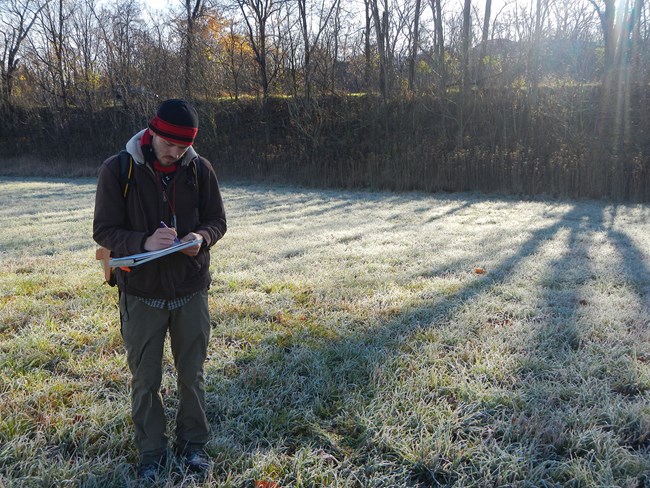
NPS
The National Capital Region Inventory & Monitoring Network monitors air quality, amphibians, birds, forest pests, vegetation, invasive plants, stream water, and stream fish and macroinvertebrates at Harpers Ferry National Historical Park. The results of that monitoring provide park managers with scientific information for decision-making.
Harpers Ferry National Historical Park sits in the Blue Ridge Mountains and includes floodplains of the Potomac and Shenandoah Rivers. 70% of the park is forested with various types of eastern deciduous forest.
The park's main natural resource management concerns are surrounding land use, regionally poor air quality, and overpopulation of deer. Climate change is predicted to negatively affect many of the natural resources of the park, including increasing ozone levels and particle pollution, raising the temperature of trout-supporting streams, changing forest composition, and favoring invasive species and forest pests and diseases. Regional air quality and land use patterns can have strong effects on park resources.
What's Happening in Harpers Ferry
NCRN Monitoring at Harpers Ferry by the Numbers
| What We Monitor | Sites at Harpers Ferry* | Monitoring Frequency | Information We Collect |
|---|---|---|---|
| Amphibians | 35 known wetland pools | Annual sampling on a subset of known wetlands Wetland sites are monitored twice per sampling period |
|
| Birds – forest and grassland | 20 (forest bird) 29 (grassland bird) |
Forest plots are monitored twice a year Grassland plots are monitored three times a year |
|
| Forest vegetation | 21 (forest vegetation) | Approximately a quarter of plots each year on a four-year cycle |
|
| Stream biota – fish and macroinvertebrates | At streams listed below | Periodic sampling 2007-2014, 2019-2023 |
|
| Stream water quality | 1 (stream site) on Flowing Springs Run | Stream sites are monitored every other month |
|
Last updated: May 11, 2023
